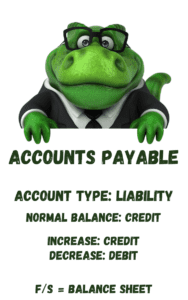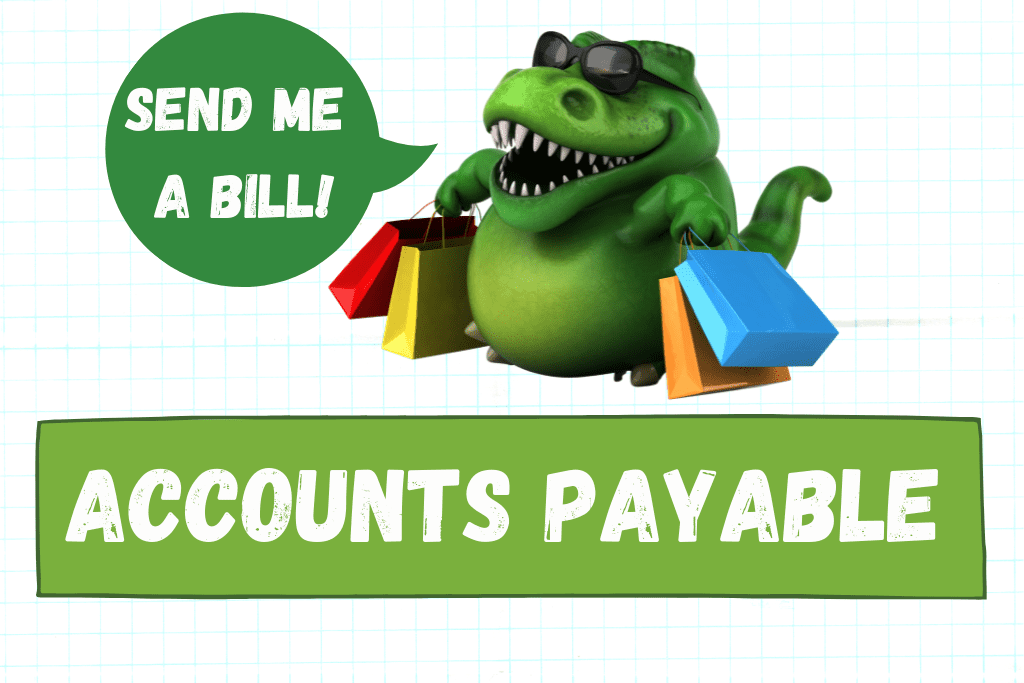Accounts Payable is a Liability. It represents the purchase of goods or services that a company has not yet paid for. The company has created an obligation to pay. A liability has a normal credit balance. A liability increases on the credit side and decreases on the debit side. Accounts Payable amounts are generally paid within 30 days, based on the terms the vendor sets for payment. Accounts Payable is listed on the Balance Sheet in the Current Liabilities section.

What is an Example of Accounts Payable?
A company purchases $10,000 of Inventory on account. The terms of the sale are the vendor expects payment in 30 days. The journal entry to record the purchase is:
| Inventory | 10,000 | |
| Accounts Payable | 10,000 |
When 30 days have passed, the company pays the vendor the full amount due. The journal entry to record the payment is:
| Accounts Payable | 10,000 | |
| Cash | 10,000 |
The amount in the Accounts Payable account is decreased to show the company no longer owes this money to the vendor. The bill has been satisfied.
What is the Difference Between Accounts Payable and Accounts Receivable?
Accounts Payable is used for purchases from vendors and suppliers. Accounts Receivable is used to record sales to customers or clients. Accounts Payable is a liability, an obligation to pay. Accounts Receivable is an asset, a promise from a customer that the business will receive cash.
To learn more about Accounts Receivable, check out this article:
-
So You Want to Start a Nonprofit…Consider This
Starting a nonprofit can be a fulfilling way to make a difference in the community, but it requires careful planning and consideration. Here are key points to consider before embarking
-
Tax Liability Accrual Explained
Accruing tax liabilities in accounting involves recognizing and recording taxes that a company owes but has not yet paid. This is important for accurate financial reporting and compliance with accounting
-
Nonprofit Monthly Financial Close Process Overview
The monthly accounting close process for a nonprofit organization involves a series of steps to ensure accurate and up-to-date financial records. This process ensures that financial statements are prepared, reviewed,
-
Navigating Payroll Taxes for Nonprofits: Responsibilities and Compliance
Payroll taxes are the taxes that employers withhold from their employees’ wages and are required to remit to the appropriate government agencies. They include various taxes that fund government programs,
-
Understanding Form 990: Transparency and Accountability for Nonprofits
Form 990 is a reporting document filed by tax-exempt organizations in the United States with the Internal Revenue Service (IRS). It provides detailed information about the organization’s financial activities, governance,
-
Financial Disclosures for Affiliated Nonprofit Organizations
Disclosures related to revenue sharing, consolidated financial statements, noncontrolling interests, and related party transactions in the context of affiliated organizations within a nonprofit are crucial for transparency and accurate financial

